


connecting
people and cultures – inspiring journeys
sharing meaningful discoveries in Asia
 About Alam Asia Net
Asia Destinations News and Links
Journeys and Stories
Support Campaigns and Projects
Alam Indah Bali
Reading, Films, Music
Inspirations
Retreats
Some Favorite Images
About Alam Asia Net
Asia Destinations News and Links
Journeys and Stories
Support Campaigns and Projects
Alam Indah Bali
Reading, Films, Music
Inspirations
Retreats
Some Favorite Images

How the Spice Islands changed the world and how songs call us back to nature and to where we belong..
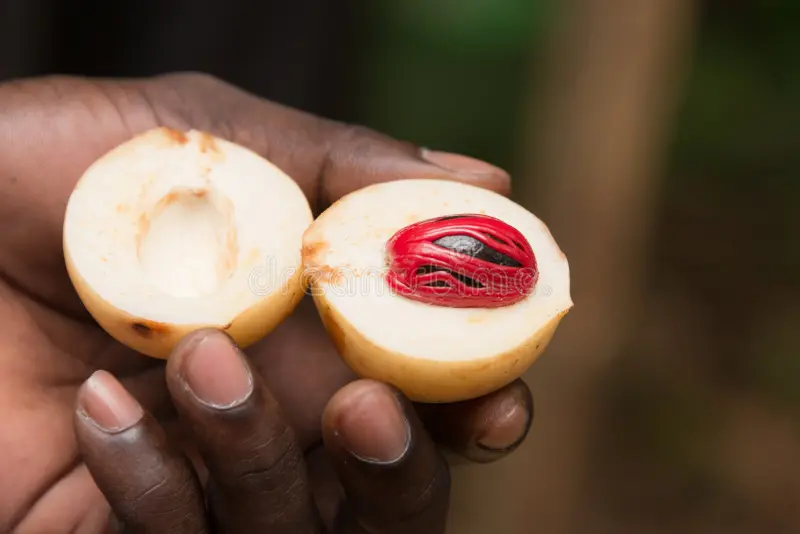
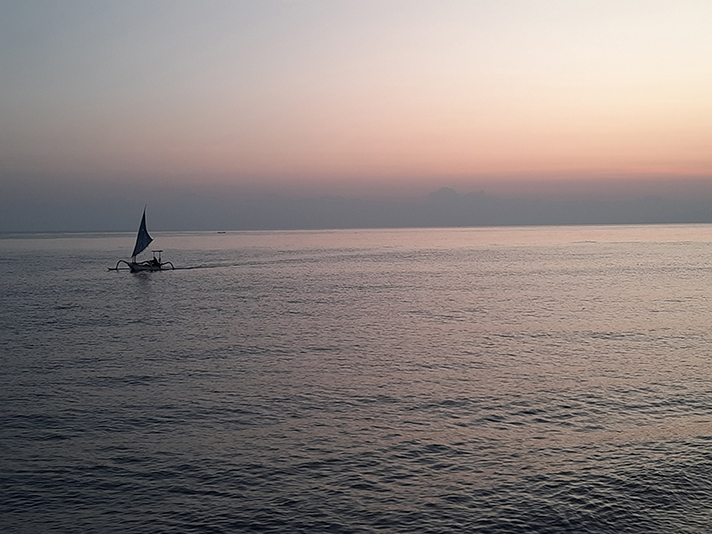
July, 2025
Looking out to sea can allow a sense of calming open space where thoughts are carried away by the waves. Watching a ship passing by in the distance reminds me of former sailing days exploring eastern Indonesia. Memories of the Spice Islands and visiting remote Banda Neira– where entering the natural harbour with the dramatic backdrop of Gunung Api volcano, is like passing back into time. Here you can wander through the sleepy town under the old Dutch fort and walk up into a magical nutmeg plantations shaded by majestic kenari nut trees.
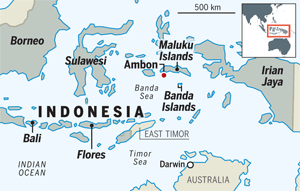

This tiny cluster of idyllic islands, once the sole source of nutmeg and cloves, became an epicenter of conflict between European powers seeking to dominate the spice trade. Nutmeg was once the gold of the earth- so valuable- that the Dutch exchanged New Amsterdam for what was to become New York to the British. I wonder how many Americans today are familiar with the Dutch once building a wall to protect their interests on Manhattan Island- claiming to have purchased the land from the Lanape people- also known as the Delaware tribe. The Dutch had arrived on present day American eastern shores partnering with native inhabitants in the fur trade. Some relationships went well but others not so much, especially when the native inhabitants looked at land as something one cannot “own.” The riches of the land were meant to be shared giving thanks to Mother Earth for providing us with fruits of life. However the Dutch moved the Lanape off Manhattan, known as Manahatta– believed to mean the island of hills. In today’s New York, “Wall Street” continues to be the center of modern-day trade. The hills are concrete, steel and glass skyscrapers.
Back in the day, local inhabitants of the Spice Islands, benefitted from passing ships trading goods. Trade is meant to benefit both parties and when spices found their way to European ports via Arab and Ottoman traders, they were found to have medicinal benefits as well as enhancing culinary flavours. There was so much demand for nutmeg and cloves that European explorers wanted to locate the source of these spices to secure the trade routes.
The Portuguese were the first Europeans to gain a stronghold on the spice trade. Alfonso de Albuquerque, the governor of Portuguese India at Goa, conquered the city of Malacca (Melaka) in 1511. This sultanate, of current peninsular Malaysia, was the port that controlled the Malacca straits rounding around present day Singapore. Whoever controlled this strait controlled all the trade passing through.
The Dutch arrived later in 16th century and by 1641, managed to oust the Portuguese from Malacca setting the path for Dutch dominance. The British also came to the scene exploring further east from India, and the Spanish came from the Philippines which they controlled. Converging on the northern Maluku islands ( north of Banda ) are Ternate and Tidore. European groups made alliances with local clans and sultans engaging in their own conflicts- all for geopolitical control of spices. Finally it was down to Dutch vs. the British.
Malacca was taken by the British in 1795 as the Dutch were weakened by the Napoleonic wars in Europe. In 1824, part of the Anglo-Dutch treaty, Malacca was officially exchanged for Bengkulu, a port on the island of Sumatra for the Dutch. This marked the division between British controlled Malaya and later Singapore, and the Dutch in control of Indonesia, known then as the Dutch East Indies.
The Portuguese had managed to take over other parts of the eastern Indonesian archipelago. The island of Timor was a great source of sandalwood and the island of Flores, called Cabo das Flores ( Cape of Flowers ) by the Portuguese, became a trading hub and center for missionary activities. Today many of the locals remain devout Catholics. The Portuguese encouraged intermarriage, so you find devotional blood ties to Portuguese.
The Spanish later ceded the Philippines to the United States in 1898- the Spanish-American War is another story.
VOC- the Dutch East India Trading Company ( Vereenigde Oostindische Compagnie )
Established in 1602, the VOC was a pioneering multinational corporation, utilizing a joint-stock system to raise capital and to manage its vast operations. The Dutch developed a trading network throughout Asia and built forts in places like Ceylon ( Sri Lanka) and Formosa ( Taiwan )
Batavia ( present day Jakarta ) became the Headquarters of the VOC in 1619. A strategic harbour, Batavia was developed according to Dutch urban planning principles with a fortress, city walls and canals. European-style buildings housed main offices and warehouses. It is amazing to imagine how a small country like the Netherlands managed to control a vast archipelago of Indonesia.
For those visiting Amsterdam today, the Maritime Museum explores 500 years of Dutch maritime history.
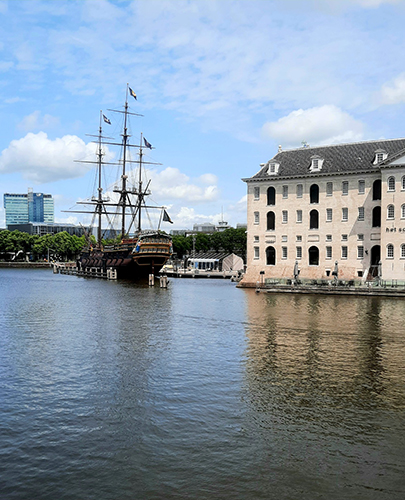
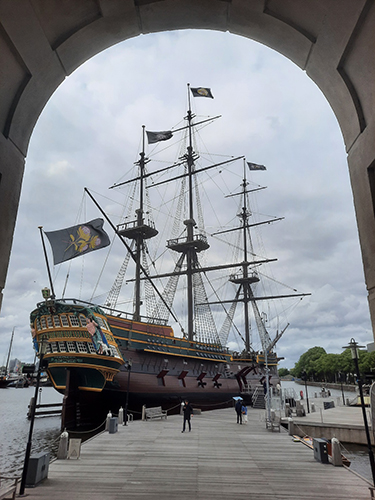
Here you can visit a replica of one of the VOC ships and imagine what it was like to sail for months in search of treasures and how they came to control them.
https://www.hetscheepvaartmuseum.com/
There was no trade without war and no war without trade – meaning war for profit and profit from war.
Initially the Dutch arrived in Banda signing trade agreements with local chiefs. But local Banda rulers also eyed opportunity to trade with the British. Afterall, locals should be able to trade with whom they want to. The Dutch wanted to have exclusive rights and the Bandanese resisted these demands resulting in conflict. The Dutch were determined to have the monopoly on nutmeg and cloves. In order to do this,
Jan Pieterszoon Coen who became Governor General of the VOC in Batavia, led an expedition of thirteen ships to Banda in 1621. Not less than 1600 soldiers, 300 Javanese prisoners, 100 mercenary ronins from Japan joined the long voyage from Batavia. The local population of Banda was massacred and slaves were brought in to work the plantations. A program of extermination was initiated- cutting trees so they could not be grown elsewhere. Nutmeg was to be exclusively on Banda and cloves on the islands of Ambon and Ternate.
It is estimated that the entire population of the Banda Islands before the Dutch conquest had been around 15,000. 90% of the population were either killed, enslaved or deported. Around 1000 people had managed to flee to other islands.
Clearing up the competition with the English, the Treaty of Breda in 1667, gave Pulau Run, the last island held by the British to the Dutch in exchange for Manhattan ( New York ) The Breda treaty also encompassed agreements in the Dutch West Indie Islands of the Caribbean as well as keeping Suriname on the South American continent.
In essence, the Dutch conquest of the Banda Islands involved a calculated strategy of trade manipulation, violent suppression, and the establishment of a plantation system that relied on forced labour to ensure the continued supply of nutmeg and mace.
I recently come across a book called The Nutmeg’s Curse- Parables for a Planet in Crisis by renowned Indian writer, Amitav Ghosh- very insightful reflecting on our world today.
Amitav Ghosh talks about the dynamics of our climate change – rooted in a centuries-old geopolitical order constructed by Western colonialism. Ghosh uses the story of nutmeg as a parable to reveal the ways human history has always been entangled with earthly materials- spices, tea, sugarcane, opium and, fossil fuels. He shows that the current crisis is ultimately the result of a mechanistic view of the earth, where nature exists as a resource for humans to use for our own ends, rather than a force of its own. Western worldview treats the Earth as an inert entity to be exploited, contrasting with indigenous perspectives that recognize the interconnectedness of all living things. The nutmeg, once a highly coveted spice, becomes a symbol for the ways in which humans have historically exploited the natural world for profit and power.

Planetary Layers
Amitav Ghosh draws a direct parallel between the layers of the nutmeg ( seed, mace, shell ) and the layers of the Earth ( core, mantle atmosphere ), suggesting that both have complex structure and agency.
The nutmeg’s journey from the Banda Islands to a global commodity reminds us how the Earth’s resources are treated. Ghosh critiques the mindset that views the world as a collection of resources simply to be extracted and exploited- a mindset that continues to drive environmental destruction today.
The Evolution of Species and a Crowning Race?
Amitav Ghosh also makes reference to British poet, Alfred Lord Tennyson whose interest in evolution predates Charles Darwin’s book: The Origin of Species- the theory of evolution by natural selection.
Tennyson had a keen interest in science and his poetic verses express reflections on evolution, as well as the birth and destiny of mankind.
From a passage of Tennyson’s most famous poems, In Memoriam: ( written between 1833-1850 ) :
The solid earth whereon we tread
In tracts of fluent heat began,
And grew to seeming random forms,
The seeming prey of cyclic storms,
Till at last arose the man;
Who throve and branch’d from clime to clime,
The herald of a higher race….
As time passes, the poem continues and calls upon Man to…
Move upward, working out the beast,
And let the Ape and Tiger die.
Darwin’s “Origin of Species” (1859) further solidified the idea of natural selection and the struggle for existence and of nature’s harsh realities. And in Darwin’s book “The Descent of Man” first published in 1871, Darwin writes:
“at some future period not very distant as measured in centuries, the civilized races of man will almost certainly exterminate and replace throughout the world the savage races.”
Tennyson and Darwin may not have advocated these outcomes, but perhaps found it simply inevitable.
This sounds familiar with ongoing wars of our times – all to protect control of oil- the new world gold. Some proclaim the name of human rights and standing up for democracy while religious zealots claim to be the higher chosen ones to dominate land and to commit genocide and ecocide. It is remarkable to imagine in our day and age of the 21st century, millions of people are believing and actually eagerly awaiting a final battle of Armageddon which will usher the higher species of man closer to god?
What is certain though, is that empires eventually do collapse.
The Dutch VOC officially went bankrupt in 1799. After decades of financial troubles and corruption, VOC assets and debts were taken over by the Dutch state which continued its colonial presence in the Dutch East Indies.
After WW-II, Indonesia proclaimed independence on 17 August, 1945, however it was not until 1949 that the Netherlands formally recognized Indonesia’s independence. The Dutch had attempted to reassert colonial control leading to armed conflicts and diplomatic struggles. The process of decolonization was not all black and white. Layers of people of different groups each have their own stories of struggle and displacement. Many Indonesians as well as Indo-Europeans, who felt loyal and at home in Indonesia, suffered under Japanese occupation. After the Japanese occupation, a time of transition also created a power vacuum with intense social upheaval. A period known as “Bersiap”– a call to action in preparation for struggle carried a revolutionary spirit, but was also associated with nationalist groups engaged in acts of violence against those perceived to be remnants of colonial rule including Dutch citizens, Chinese and other minority groups.
Some carried a false hope of their own independence. It is amazing how Indonesia did manage to hold together as one nation as after 1945, Dutch forces known as the KNIL-Royal Netherlands East Indies Army, remained in the Maluku Islands along with ethnic Maluku (Moluccan) soldiers who remained loyal to the Dutch. Pro-Dutch Moluccans distrustful of the Javanese and a Muslim-dominated Indonesian Republic, were eager to have a treaty granting them a federal form of statehood supported by the Dutch. But the treaty was broken in 1949 with the Netherlands recognizing full independence of Indonesia. But rebel forces declared the Republic of South Maluku (RMS) in 1950. It did not take long for Indonesian troops to defeat the RMS rebels in Ambon who withdrew to the island of Seram and an armed struggle continued until 1963. As KNIL forces disbanded, many Moluccan soldiers and their families were relocated to the Netherlands. It was thought their stay in the Netherlands would be temporary but over time, the plan for a Republic of South Maluku was forgotten. Thousands felt abandoned in camps and it took years of challenges to finally assimilate into Dutch society and eventually becoming Dutch citizens. It was the biggest wave of migration to the Netherlands.
If visiting Den Haag in the Netherlands, it is very worthwhile to visit the Museum Sophiahof with an exhibit called Ons Land, presenting very touching stories of families who have settled in the Netherlands.
Ons Land is difficult to translate literally. Ons (Our) Land can mean our Homeland…and also the Land to where we belong. In this exhibit, Ons Land refers to both the Netherlands- the land which is home now and the country of origin which continues to play an important role in cultural connections, memories and identity.
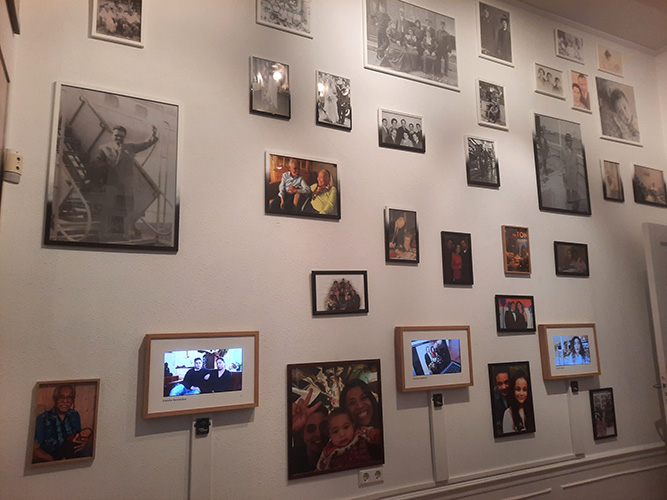
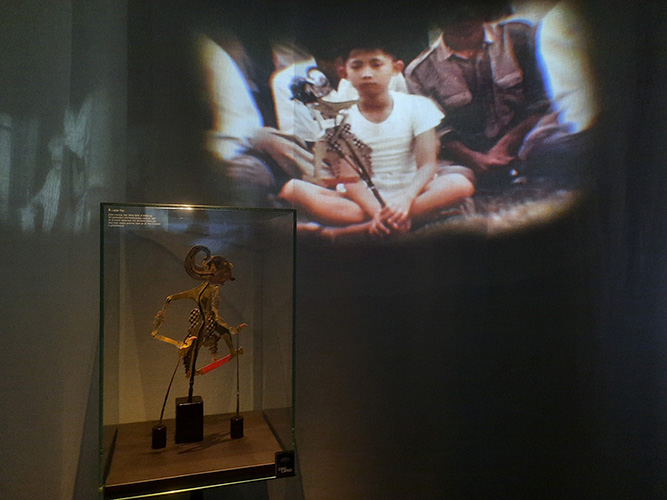
See More:
https://www.museumsophiahof.nl/tentoonstellingen/ons-land-dekolonisatie-generaties-verhalen
Museum Sophiahof is a beautiful building amongst peaceful trees where you can enjoy various other events.
The people of Maluku are also known for their music, often carrying sentimental stories in their songs.
Some musicians have made their way out into the world raising awareness for their homeland, and are finding popularity in places like Jakarta. After the fall of Suharto in the late 90s, the Maluku Islands experienced another wave of unrest amongst Christian and Muslim groups. An economic crisis, transmigration policies, extremist groups and shadow power plays all played a role in what unfolded. Harmony in communities turned into chaos and tragedy with many people killed. Different groups fled to other islands to find safety. Christians fled or were expelled from Banda. Muslims found refuge on Banda. Christians who stayed, including a family of the last Dutch descendant nutmeg-perkenier, were massacred. More waves of pain. My heart felt heavy for Banda and about revisiting. Banda again felt lost in time. But over time, nature again rebounds, trees and flowers bloom and the birds sing.
But can we remember the song of the nutmeg?
The beautiful Maluku Islands remain again mostly undiscovered. Nutmeg did manage to be smuggled out during colonial times- to places like Mauritius ( Ile de France ) and as far away as Barbados. Connecticut in the US even became known as the “Nutmeg State”- not for actually growing nutmeg…they just fooled others with wooden carvings of nutmeg!
These new nutmegs do not carry the same song. If it were not for nutmeg, the world would not know about Banda- an incredibly beautiful place with a dark human history with complex layers not easily understood. Today the inhabitants of Banda are a mix of people- some descendants of migrants who came to work in the plantations alongside others who have lived there for generations.
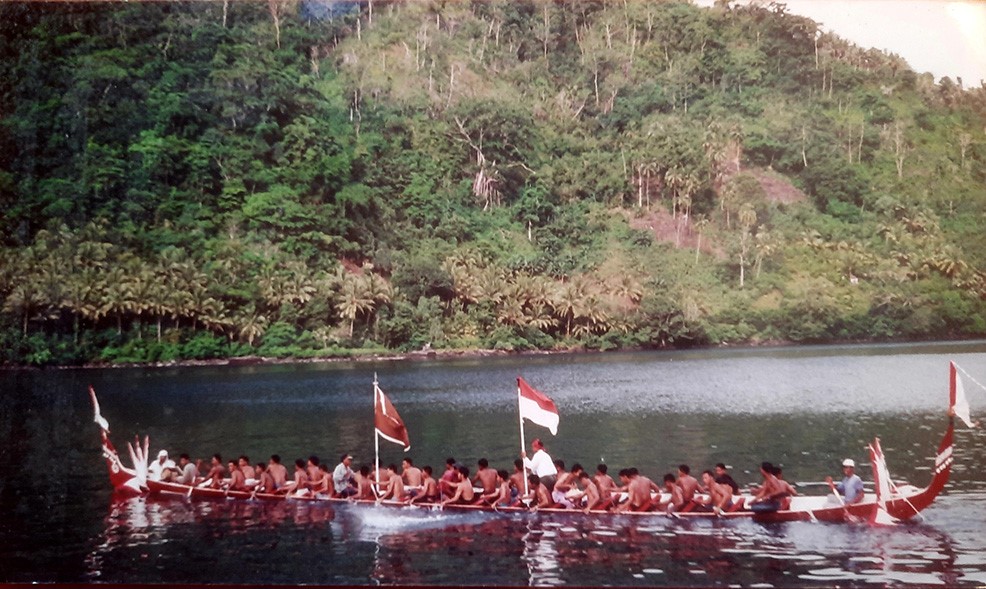
It is my hope that the old cultural traditions including the preservation of oral poetry and songs passed on through generations, can continue to reunite the people. Songs honoring their nutmeg, and songs sung during boat festivals are deeply intertwined with their maritime environment and history. They form memories and a loving nostalgia of the islands where they are at home, a place they feel they belong to.
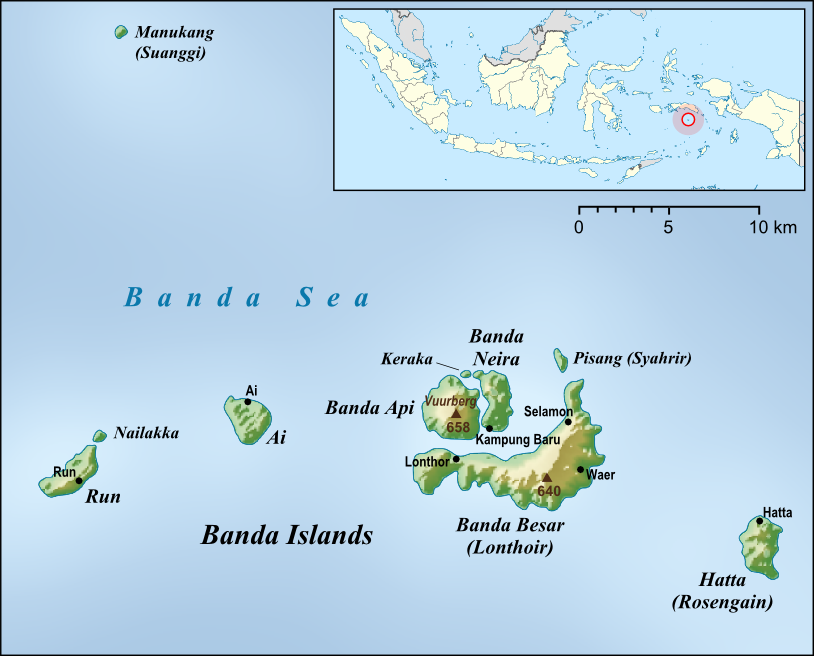
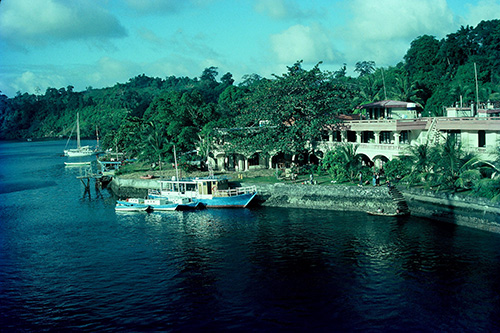
Wishing to venture out to explore Banda?
Travel to remote places does take time and effort and a mindset to be flexibile to enjoy an adventure.
Do not think you can make a quick trip to Banda! Maluku people may feel left out by central government for not investing much in tourism development. However if not managed well, tourism could become another curse to these idyllic islands.
The Bandas are a group of 11 islands and you should definitely take time to hire a local boat to explore around Pulau Ai, Pulau Hatta, and see Pulau Run- imagine former days of early explorers and decide if the Dutch or the British got the better deal.
Lonthor on Banda Besar is where you can walk amongst the nutmeg trees.
Ships that once brought explorers to land and spices are now bringing visitors to experience the underwater world. Nutrient-rich waters with strong currents contribute to an abundance of marine biodiversity. Diving enthusiasts can find over 30 dive sites to explore with the guidance of local dive operators. Snorkelers can also enjoy seeing colorful reef fish, turtles and a chance to see manta rays.
Best Travel Seasons with traditionally calmer seas are during the transition monsoon months:
November – December and February- May.
Best is to first fly to Ambon- daily flights from Jakarta, Surabaya or Makassar on either Garuda Indonesia, Batik or Lion Air. From Bali, you can best connect via Makassar or Surabaya.
From Ambon, find a way to continue on to Banda by local ferry boats or small planes…
Banda Neira offers accommodations from simple guesthouses to upscale heritage inns- all walking distance from the harbour and up to the old fort walls.
Here are some links to accomodations with helpful information on how to get there:
Cilu Bintang Estate- owned by descendants from two of the Spice Island’s oldest families:
http://www.cilubintang.com
Maulana Hotel– built and run by the Alwi family which has hosted curious travelers and celebrities:
https://www.themaulanahotel.com
Dive Blue Motion: experienced dive company with more links to accomodations and travel updates:
https://www.dive-bluemotion.com
Banda Ocean Divers: https://bandaoceandivers.com/
Several Indonesia-based Dive Liveaboards sail to Banda, often in combination with beautiful Raja Ampat Islands of Indonesia’s West Papua.
Sea Trek combines cultural activities with their sailing adventures aboard their Bugis schooners:
Let us allow the waves carry our stories and if we try hard enough, perhaps we can listen… and not forget…to appreciate all we have on this planet. May senseless wars stop!
May songs of Humanity be heard.
When the Spice Islands began to be forgotten, music became the Moluccans’ last resort.
Click below to also see links to some beautiful music:
Further good reading is: Nathaniel’s Nutmeg by Giles Milton .. telling the story of English adventurer Nathaniel Courthope stepping ashore on remote Run Island on a secret mission to persuade the islanders of Run to grant a monopoly to England over their nutmeg.
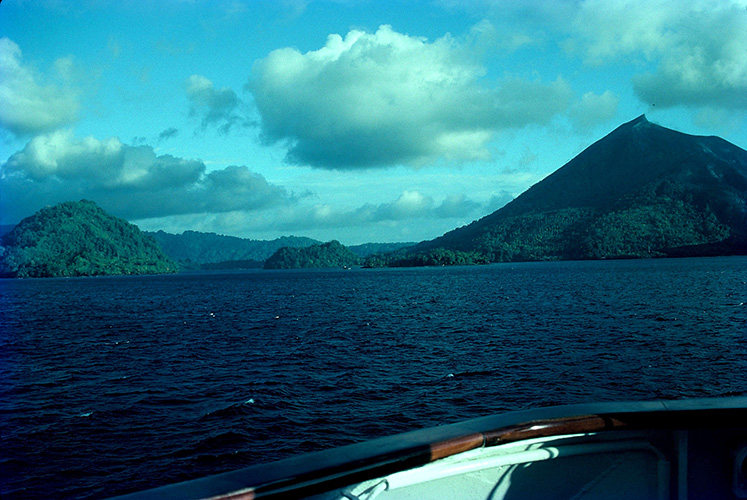
Banda from our beloved World Discoverer back in 1988.